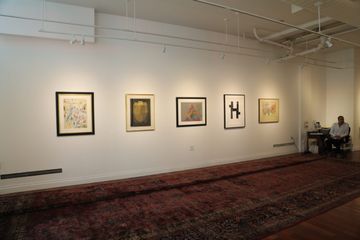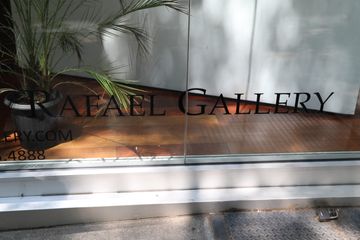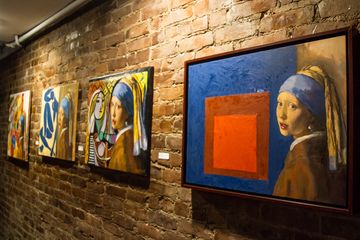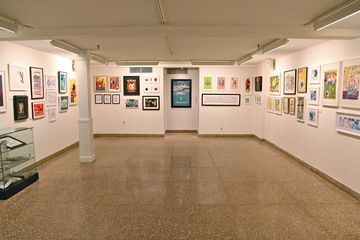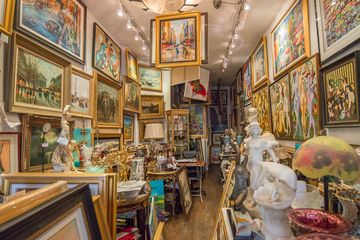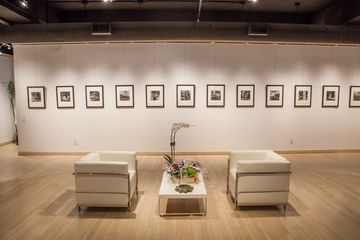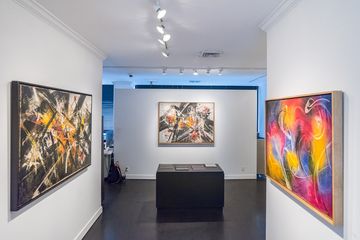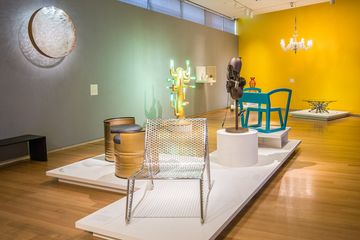The Anita Shapolsky Gallery is named for its founder, whom I had the pleasure of meeting when she invited me to No. 152. Having first opened in SoHo in 1982, by the late nineties, Mrs. Shapolsky told me that by the late nineties she was ready for a change, and so she moved the gallery closer to home – in fact, into the building on 65th Street where she had been living for twenty-two years. Since 1997, the gallery and Mrs. Shapolsky have shared a home. The relationship is truly a symbiotic one. "What would you do in a house without art? " she exclaimed. "They take the paintings down between shows, and I'm sick with nothing on the wall. " Her bedroom is tucked into the second floor of the building, concealed behind accordion doors, and in another room of the gallery, a shoe closet is just ajar. On the day that I sat down to speak with Mrs. Shapolsky, the feature exhibit, , was by the artist Russell Connor, whose art riffed on classic painters, pairing them and their masterworks with references to other, more modern pieces. Mrs. Shapolsky said that she thinks of it as an educational show, as it exposes visitors to art history, and brings the old and the new together. Having been invited to a lecture by the artist, I had the pleasure of meeting Russell Connor, and listened as he elaborated on a number of the paintings; each one has a hidden joke for the seasoned art historian. This exhibit was a change from Russell Connor's accustomed style; he usually prefers abstract art for which the Anita Shapolsky Gallery is best known. When Mrs. Shapolsky opened her gallery, she decided to focus on the Abstract Expressionists of the fifties, especially those of the New York school. She had no experience at the time working in or running a gallery, only a great passion for art. "It was madness, sheer madness, " she told me. But despite the mad ambition of the project, the gallery has been a great success. Mrs. Shapolsky drew on her connections to other artists and friends in order to bring the appropriate pieces into her space. Although she knew that the aesthetic was not popular at the time, Mrs. Shapolsky told me that she had grown up with the abstract expressionists, and felt that they represented an important artistic avante garde. The Anita Shapolsky Gallery excels not only at exhibiting important art, but also at connecting that art to people. To be both in a gallery and a home is a unique experience, and meeting Mrs. Shapolsky was a privilege. She is as much a part of the gallery as is the art. On the day that I met her, she was wearing a piece of art around her neck. Her jewelry was made by Ibram Lassaw, whose work can also be seen at the Guggenheim.
